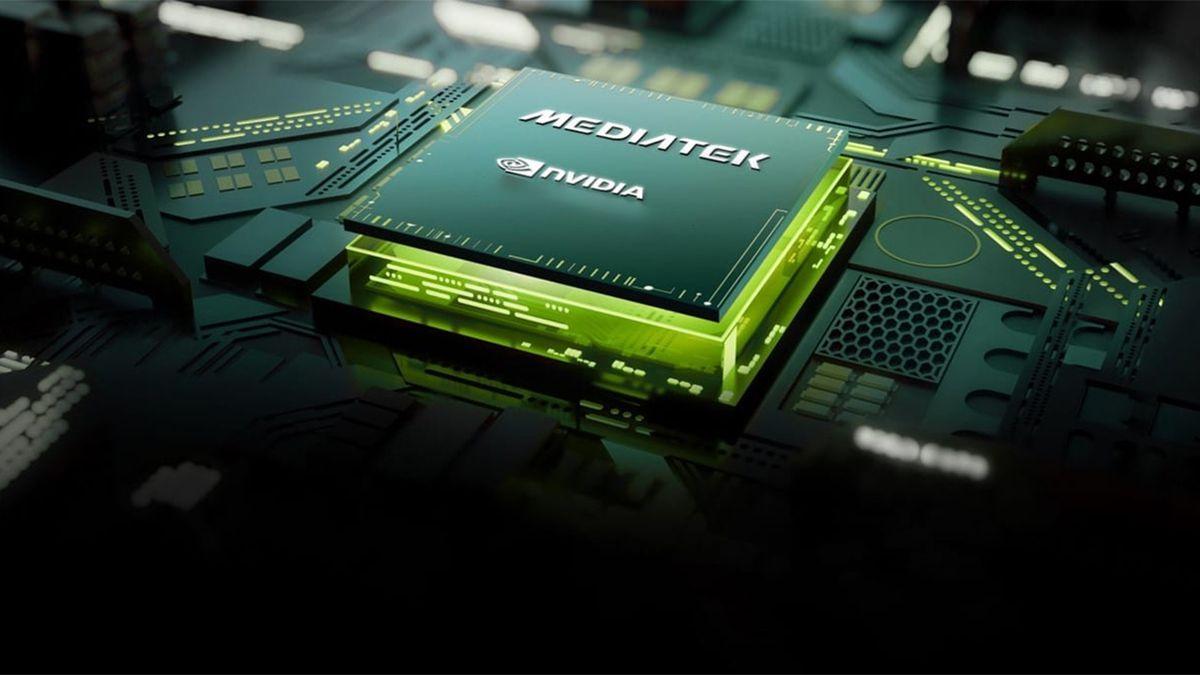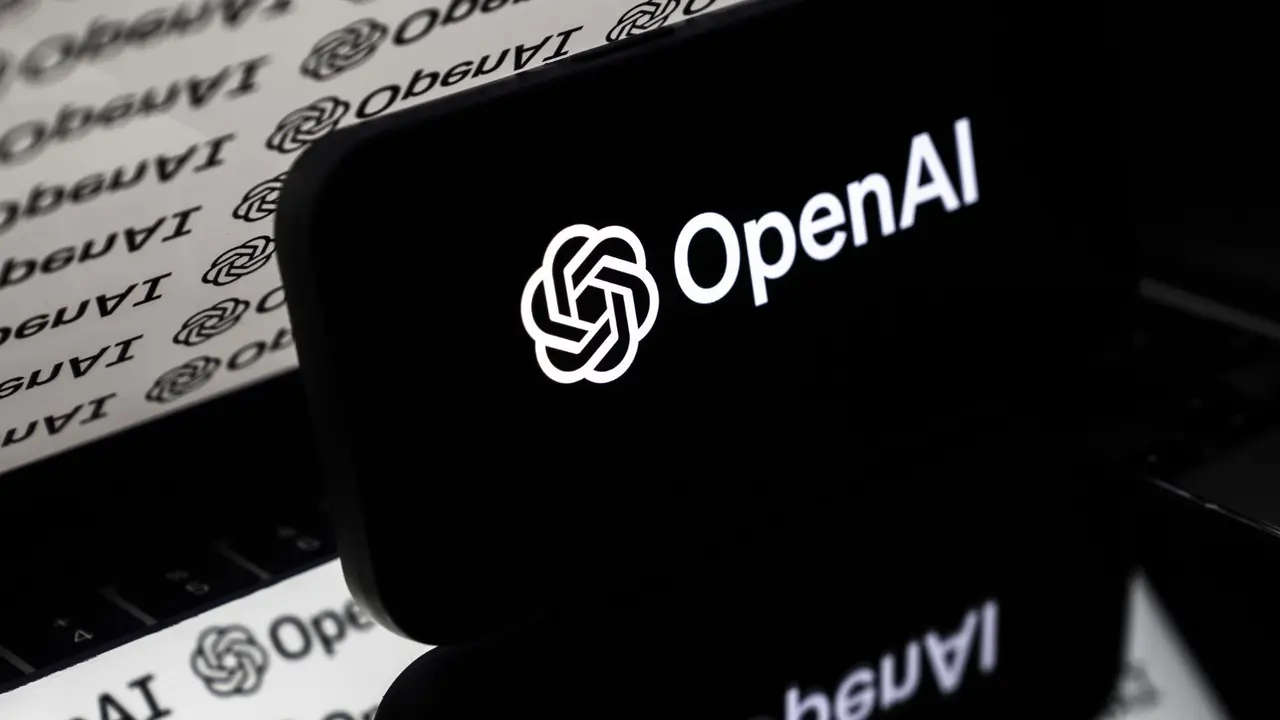Nvidia's N1X AI PC Chip: A Powerful Contender in the Integrated GPU Market
6 Sources
6 Sources
[1]
Nvidia N1X SoC leaks with the same number of CUDA cores as an RTX 5070 -- N1X specs align with the GB10 Superchip
Nvidia's long-rumored and long-delayed N1X SoC has broken cover once again, this time revealing its GPU capabilities through a fresh Geekbench OpenCL listing. We've seen various CPU-focused leaks surrounding this chip before, but this provides our first genuine look at the GPU. That being said, this isn't final silicon -- it's an early engineering sample -- but the details are enough to show where Nvidia is headed with its first consumer-class ARM SoC for laptops and possibly desktops. The Geekbench entry confirms a 20-core CPU setup split into two 10-core clusters, built on Nvidia's Grace architecture. More importantly, it confirms 48 Streaming Multiprocessors (SMs), translating to 6,144 CUDA cores -- the exact count as the desktop GeForce RTX 5070. Interestingly, these specs also match Nvidia's GB10 Superchip, which currently powers the DGX Spark AI mini-PCs, suggesting that N1X might be a repurposed, possibly lower-power version aimed at the mainstream market. After all, they're both ARM-based chips developed in unison with MediaTek. Performance, however, is still in the rough. This sample clocked in at a modest 1.05 GHz and scored 46,361 in OpenCL, roughly in the territory of the RTX 2050. The reason is power and frequency limits, which are typical of early prototypes, as well as the absence of dedicated GDDR memory, since the SoC relies on shared LPDDR5X. Even in this state, the N1X's iGPU is already outpacing every modern integrated GPU, including Apple's M3 Max and AMD's 890M, which top out at around 37,500 in similar benchmarks. Even in this state, the N1X's iGPU is already outpacing every modern integrated GPU, including Apple's M3 Max and AMD's 890M, which top out at around 37,500 in similar benchmarks. The GPU performance ceiling is higher, given that a fully powered RTX 5070 boosts to 2.5 GHz with a 250W TDP, while the N1X is capped at around 120W for the entire chip. This isn't the first time the N1X has appeared on Geekbench. Earlier leaks revealed its CPU performance was competitive but not earth-shattering, which is to be expected from unfinished drivers and firmware. With the latest listing, Nvidia is signaling a hybrid approach: pairing a Blackwell GPU core array with an ARM-based CPU cluster, aiming for a balance of AI performance, gaming, and efficiency -- similar to how AMD's Strix Halo and Apple's M-series chips are positioned. There's still no launch date in sight. Rumors suggest a Q1 2026 release, possibly timed to coincide with the next wave of AI-focused Windows laptops, as Microsoft appears to be holding up on that at the moment. For now, Nvidia's N1X sits in the shadows, a prototype with the specs of a mid-tier discrete GPU and ambitions to push iGPU performance into uncharted territory. If Nvidia gives this chip the power and bandwidth it needs, the N1X could be the first ARM-based SoC to seriously challenge x86 giants like AMD and Intel on high-performance laptops -- and maybe even take a bite out of Apple's lead in the premium AI laptop segment.
[2]
Nvidia's upcoming ARM-based N1X SoC leaks again, this time on FurMark -- modest benchmark score indicates early engineering sample but confirms Windows evaluation
Nvidia's upcoming N1X SoC has made a fresh appearance -- this time in FurMark's benchmark database -- offering a first look at the chip's performance running natively on Windows 11. While the numbers will certainly not grab headlines, they provide valuable insight into where the chip currently stands in its development cycle. Identified as "JMJWOA" by FurMark, the N1X reportedly scored 4,286 points in the 720p stress test, averaging 71 FPS. That's not even as good as some RTX 2060 scores, despite the N1X reportedly featuring 6,144 CUDA cores, more than the RTX 5070. On the surface, that may seem like underperformance, especially considering the sizable core count, but there's more nuance to the situation. This is clearly not a finished product. Nvidia's N1X is expected to debut in 2026, and the version tested here is almost certainly an early engineering sample. Running at a modest 120W power budget and paired with pre-release 590.22 drivers -- drivers that are still in transition away from legacy GPU architectures like Kepler and Maxwell -- it's unrealistic to expect full-fledged performance at this point. Moreover, FurMark itself is more of a stress test than a benchmark, often throttled or deprioritized by power and thermal management systems, especially in pre-release silicon. In this run, the N1X reportedly only hit 63% utilization and 59°C, possibly indicating built-in protections that prevent full ramp-up under synthetic loads. Whether it's firmware, BIOS restrictions, or driver immaturity, this result doesn't reflect the chip's actual, real-world potential. That being said, the bigger takeaway here is the fact that Nvidia has the N1X running on Windows 11 at all. That signals a critical step in software enablement, and the ongoing validation process across operating systems is a prerequisite for broader deployment. Nvidia has been aggressive in positioning the N1X as a versatile compute platform, targeting AI and workstation workloads rather than raw gaming performance. After all, every leak points toward it being a cut-down GB10. With a year to go before release, the N1X's FurMark outing should be seen less as a definitive performance indicator and more as a milestone in its evolving development journey. If anything, it shows Nvidia is steadily laying the groundwork for its most ambitious ARM-based SoC to date, something that will only stir up the competition in this market space.
[3]
Nvidia N1X AI PC chip leaks with the same number of CUDA cores as an RTX 5070
The big picture: Nvidia has long been developing an AI PC processor that combines Arm CPU cores with Blackwell GPU architecture. The chip has now appeared on the Geekbench database for at least the second time, revealing key hardware details and performance metrics. The Nvidia N1X AI PC processor achieved an impressive OpenCL score of 46,361, outperforming all integrated GPUs from Intel, AMD, Qualcomm, and other leading chipmakers. According to the Geekbench listing, it features 48 Streaming Multiprocessors and 6,144 CUDA cores - matching the core count of the GeForce RTX 5070. Despite the identical core count, there are several key differences between the N1X and the RTX 5070. While the dedicated graphics card is equipped with 12GB of GDDR7 memory and up to 672 GB/s of memory bandwidth, the N1X SoC lacks dedicated VRAM and instead relies on onboard LPDDR5X memory. Another major difference lies in GPU clock speed. The N1X tops out at just 1.048 GHz, compared to a base clock of 2.3 GHz and a boost clock of up to 2.512 GHz on the RTX 5070. Additionally, the 5070 has a maximum power draw of 250W, whereas the N1X is rated at just 120W for the entire chip. On the CPU side, the Geekbench listing appears to confirm that the N1X features 20 CPU cores, divided into two 10-core clusters. An earlier listing showed the CPU scoring 3,096 points in the single-core test and 18,837 points in the multi-core benchmark, comparable to some current laptop chips from Intel and AMD. It's worth noting that all Geekbench entries should be taken with a grain of salt, given how easily these listings can be manipulated. Even if authentic, synthetic benchmarks aren't always reliable indicators of real-world performance. Moreover, the tested chip is likely an engineering sample with limited clock speeds, so the final version could offer improved performance. Tom's Hardware notes that the N1X's specifications closely resemble those of the DGX Spark AI mini-PCs, speculating that it may be a "repurposed, possibly lower-power version" designed for mainstream users. Nvidia has not officially announced the N1X, so key details such as the launch date, full specifications, and verified performance metrics remain unknown. However, online speculation suggests it could debut in Q1 2026, alongside Microsoft's next wave of AI PCs.
[4]
Nvidia's N1X consumer chip pops up in benchmark equalling core count of RTX 5070 GPU - cue excited gasps, but let's not get carried away
That equals the RTX 5070 for pure core count, but there's much more to factor in when it comes to performance Remember Nvidia's rumored CPU that caused quite a buzz on the grapevine last year? We've apparently now seen this consumer chip in a benchmark leak, where the spilled spec details are the key aspect. Tom's Hardware reports that the N1X chip, which is Arm-based (like Qualcomm's Snapdragon X CPUs), has been spotted in a Geekbench result, specifically for the OpenCL (graphics) test, where it scored 46,361. That score is pretty much meaningless at this point. This is an early engineering sample of the N1X (in theory), and even then, if you want to gauge graphics performance, Geekbench is far from the first choice of synthetic benchmarks. As noted, though, this gives us a tantalizing glimpse of the spec, which shows that (add salt now) the N1X will have 20 cores, apparently split into a pair of 10-core clusters. That's the processor itself, but we also see the integrated GPU here, which is shown to have 48 Streaming Multiprocessors - that equates to 6,144 CUDA cores. That sounds like a lot, right? Well, it is, and in fact, those familiar with Nvidia's graphics cards will realize that this is in the ballpark for a mid-range current-gen GPU - to be precise, the RTX 5070, which, in fact, has that exact core count. So, are we getting a compact consumer chip that could go in budget laptops or handhelds to deliver the same frame rates as the mighty RTX 5070? In a word, no, but the N1X still looks to be shaping up as a promising piece of silicon, and one that will have rivals sitting up and taking notice. As to the reasons why performance can't simply be drawn from the number of cores seen on the GPU here - it's not a patch on the RTX 5070 in this benchmark, of course - there are other important factors at play aside from the basic core count. That includes the clock speed and the power supplied to the GPU, which is a very different scenario with integrated graphics in a chip like this versus a full-on graphics card in a desktop PC. As well as considering the power envelope, throw in bandwidth limitations too - in terms of piping tasks over to the system memory, with no on-board VRAM of course - and the upshot is a good deal of headwinds. That won't stop the N1X from being a potentially sterling performer for an all-in-one chip, but there's not much point trying to guess at the exact level of graphics performance that it might provide at this stage. (Certainly not from the leaked benchmark here, as already noted). Tom's makes an interesting observation, which is that the leaked specs match Nvidia's GB10 'superchip' built for powerful AI performance and ushering in the era of the tiny AI supercomputer (pictured above). There's no reason why Nvidia couldn't put out another spin on this for consumer-targeted devices, including mini PCs and laptops, and indeed, gamers are getting particularly excited about the possible use in handhelds. For now, though, this is still very much in rumor territory. If previous speculation is to be believed, we might see Nvidia's consumer CPU revealed later this year, ahead of a launch in early 2026.
[5]
NVIDIA's new N1X AI PC chip rumor: same GPU core count as RTX 5070, faster than all other iGPUs
TL;DR: NVIDIA's upcoming N1X AI PC processor, featuring Arm CPU and Blackwell GPU cores, achieves impressive Geekbench OpenCL scores surpassing all integrated GPUs and rivaling the GeForce RTX 5070. Despite a lower clock and shared memory, it targets AMD's Strix Halo APU with a 2026 launch after silicon modifications. NVIDIA is still cooking its upcoming N1X AI PC processor, based on Arm CPU cores and Blackwell GPU cores. But now we've got some Geekbench scores that show it's as fast as a GeForce RTX 5070, and faster than all other integrated GPUs on the market. In some new Geekbench OpenCL browser benchmarks, we have the upcoming NVIDIA N1X processor scoring 46,361 points. We've also got some details on the Blackwell-based GPU which rocks 6144 CUDA cores and 48 SM units, the same core count as the GeForce RTX 5070 which is based on the GB205 "Blackwell" GPU. NVIDIA's GeForce RTX 5070 features the GB205 GPU, which contains 192 TMUs, 80 ROPs, 48 RT Cores, and 192 Tensor Cores. There's also 12GB of GDDR7 memory with up to 672GB/sec of memory bandwidth, a GPU boost clock of up to 2512MHz and a 250W TDP. There are some stark differences between the RTX 5070 and upcoming N1X processor, with the Geekbench result seeing the N1X barely pushing 1.05GHz (1048MHz to be exact). The N1X also doesn't have dedicated VRAM, but rather shares the LPDDR5X memory onboard the SoC itself. The TDP is also radically lower with a maximum 120W TDP. Even with the 46,361 points on the OpenCL benchmark on Geekbench, we shouldn't expect RTX 5070 performance -- but, it does beat every other integrated GPU on the market -- an impressive feat in its engineering sample state. NVIDIA's upcoming N1X processor will be aimed as a competitor to AMD's current-gen Strix Halo APU, which is a powerful APU on its own, with a fantastic RDNA 3.5-based Radeon 8060S GPU that is capable of 1080p and 1440p 120Hz+ gaming, and even light 4K 60FPS if you dial down some of the visual settings in your games. We've been reporting that NVIDIA's new N1X AI PC processor has hit some issues lately requiring some modifications performed to the silicon, and that its launch has been pushed back until 2026. We should hopefully have some more concrete news on N1X at CES 2026, which is less than 6 months away now.
[6]
NVIDIA N1X SOC Features As Many Cores As The GeForce RTX 5070 GPU, 6144 "Blackwell" Cores & Faster Than All Modern iGPUs In Engineering State
The first details of the GPU featured on the N1X SoC have started to emerge from Geekbench, which offers the same core count as RTX 5070. NVIDIA N1X SOC Packs A "Blackwell" GPU With The Same Core Count As The RTX 5070, Much Work To Be Done On The Performance Side A few hours ago, the first entry of NVIDIA's N1X showed up in Geekbench's OpenCL browser. While we have already reported the CPU aspects of the SOC, the GPU side information was still a bit lacking. But now we know what the chip has to offer. The N1X entry shows that the SOC will be packing a Blackwell GPU with the same core count as the RTX 5070. This means we will be seeing 6144 core arranged within 48 SM units. The RTX 5070 uses the GB205 GPU, but it is unclear if the N1X is using a similar silicon or a custom variant. The RTX 5070 packs a total of 192 TMUs, 80 ROPs, 48 RT Cores, and 192 Tensor Cores. It also comes with dedicated 12 GB of GDDR7 memory with up to 672 GB/s bandwidth. Clock speeds for the dedicated graphics card boost up to 2512 MHz on a 250W TDP. The Geekbench listing shows that the N1X's GPU was barely pushing it beyond 1.05 GHz, which is vastly lower than the RTX 5070. Furthermore, the chip doesn't have dedicated memory, but instead features the LPDDR5X standard, which is shared between the entire SOC. And lastly, the chip is expected to feature a maximum TDP range of up to 120W, so even if the GPU does get 100W power in graphics-intensive or AI scenarios, it is still 150W behind the dedicated part. Looking at the performance figures, the N1X scored 46,361 points, which puts it above and beyond the other modern day iGPUs but way behind the RTX 5070. Once again, this is due to the fact that not only is this chip severely constrained in the power department, but it is still an early engineering sample. NVIDIA will be tweaking the performance for its N1X SOCs massively before launch. Also, the N1X, given its 120W or so TDP, should be compared against the Strix Halo "AMD Ryzen AI Max" offerings, which feature a similarly large GPU. Those provide much better performance, but once again, it remains to be seen just how much performance NVIDIA can extract out of these chips before launch. Current rumors allege that the N1X SOC will be launching sometime in 2026, with some claiming the first half and others claiming the latter half of the year. With that said, N1X will make the SOC segment a lot more competitive than it is, and will be NVIDIA's first-ever chance to really compete against x86 and Arm giants such as Intel, AMD, Qualcomm, and Apple. NVIDIA N1X SOC Specs (Preliminary):
Share
Share
Copy Link
Nvidia's upcoming N1X AI PC processor, featuring ARM CPU and Blackwell GPU cores, has been spotted in benchmarks, showcasing impressive performance that rivals dedicated GPUs and outperforms existing integrated solutions.
Nvidia's N1X: A Powerful New Contender in AI PC Chips
Nvidia's long-rumored N1X AI PC processor has recently surfaced in benchmark leaks, offering a tantalizing glimpse into the future of integrated graphics performance. This ARM-based chip, which combines CPU cores with Nvidia's Blackwell GPU architecture, is generating significant interest in the tech community due to its impressive specifications and potential capabilities
1
2
.
Source: Wccftech
Impressive Hardware Specifications
The N1X chip boasts some remarkable hardware features:
- 20-core CPU setup, split into two 10-core clusters based on Nvidia's Grace architecture
- 48 Streaming Multiprocessors (SMs), translating to 6,144 CUDA cores
- Integrated GPU with the same core count as the desktop GeForce RTX 5070
- Reliance on shared LPDDR5X memory instead of dedicated GDDR memory
1
3
These specifications align closely with Nvidia's GB10 Superchip, which currently powers the DGX Spark AI mini-PCs, suggesting that the N1X might be a repurposed, lower-power version aimed at the mainstream market
1
.Benchmark Performance
Recent benchmark leaks have provided insights into the N1X's performance:

Source: TechSpot
- Geekbench OpenCL score of 46,361, outperforming all modern integrated GPUs, including Apple's M3 Max and AMD's 890M
1
3
- FurMark benchmark score of 4,286 points in a 720p stress test, averaging 71 FPS
2
It's important to note that these results are from early engineering samples, with the chip running at a modest 1.05 GHz clock speed and a 120W power budget
1
2
. The final product is expected to offer significantly improved performance.Positioning in the Market
Nvidia appears to be taking a hybrid approach with the N1X, aiming to balance AI performance, gaming capabilities, and efficiency. This positions the chip as a potential competitor to:
- AMD's Strix Halo APU
- Apple's M-series chips
- High-performance laptops from Intel and AMD
1
4
The N1X's ability to outperform existing integrated GPUs while potentially offering performance close to mid-range discrete GPUs makes it a promising contender in the AI PC and laptop market
3
5
.Related Stories
Development and Launch Timeline
While Nvidia has not officially announced the N1X, several key points about its development have emerged:
- The chip is currently running on Windows 11, indicating progress in software enablement and validation
2
- Launch is rumored for Q1 2026, possibly coinciding with the next wave of AI-focused Windows laptops
1
4
- Recent reports suggest that some silicon modifications were required, contributing to the extended development timeline
5
Implications for the Industry

Source: Tom's Hardware
The N1X represents a significant step for Nvidia in the consumer chip market:
- It could be the first ARM-based SoC to seriously challenge x86 giants like AMD and Intel in high-performance laptops
- The chip may help Nvidia compete with Apple in the premium AI laptop segment
- Its development signals Nvidia's commitment to creating versatile compute platforms targeting AI and workstation workloads
1
4
As the N1X continues its development journey, it's clear that Nvidia is positioning itself to be a major player in the next generation of AI-capable consumer devices. The combination of powerful integrated graphics, efficient ARM-based CPU cores, and Nvidia's expertise in AI acceleration could potentially reshape the landscape of personal computing in the coming years.
References
Summarized by
Navi
[1]
[2]
Related Stories
Nvidia's N1X Arm Processor Leaks: Challenging Intel and AMD in the Laptop Market
11 Jun 2025•Technology

Nvidia's N1 SoC Unveiled: GB10 Superchip Powers DGX Spark and Future PC Products
19 Sept 2025•Technology

Nvidia and MediaTek's N1X AI PC Platform Delayed to 2026: A Strategic Recalibration
17 Jul 2025•Technology

Recent Highlights
1
AI Chatbots Sway Voters More Effectively Than Traditional Political Ads, New Studies Reveal
Science and Research

2
Google AI glasses set to launch in 2026 with Gemini and Android XR across multiple partners
Technology

3
EU Launches Antitrust Probe Into Google's AI Training Practices and Content Usage
Policy and Regulation





